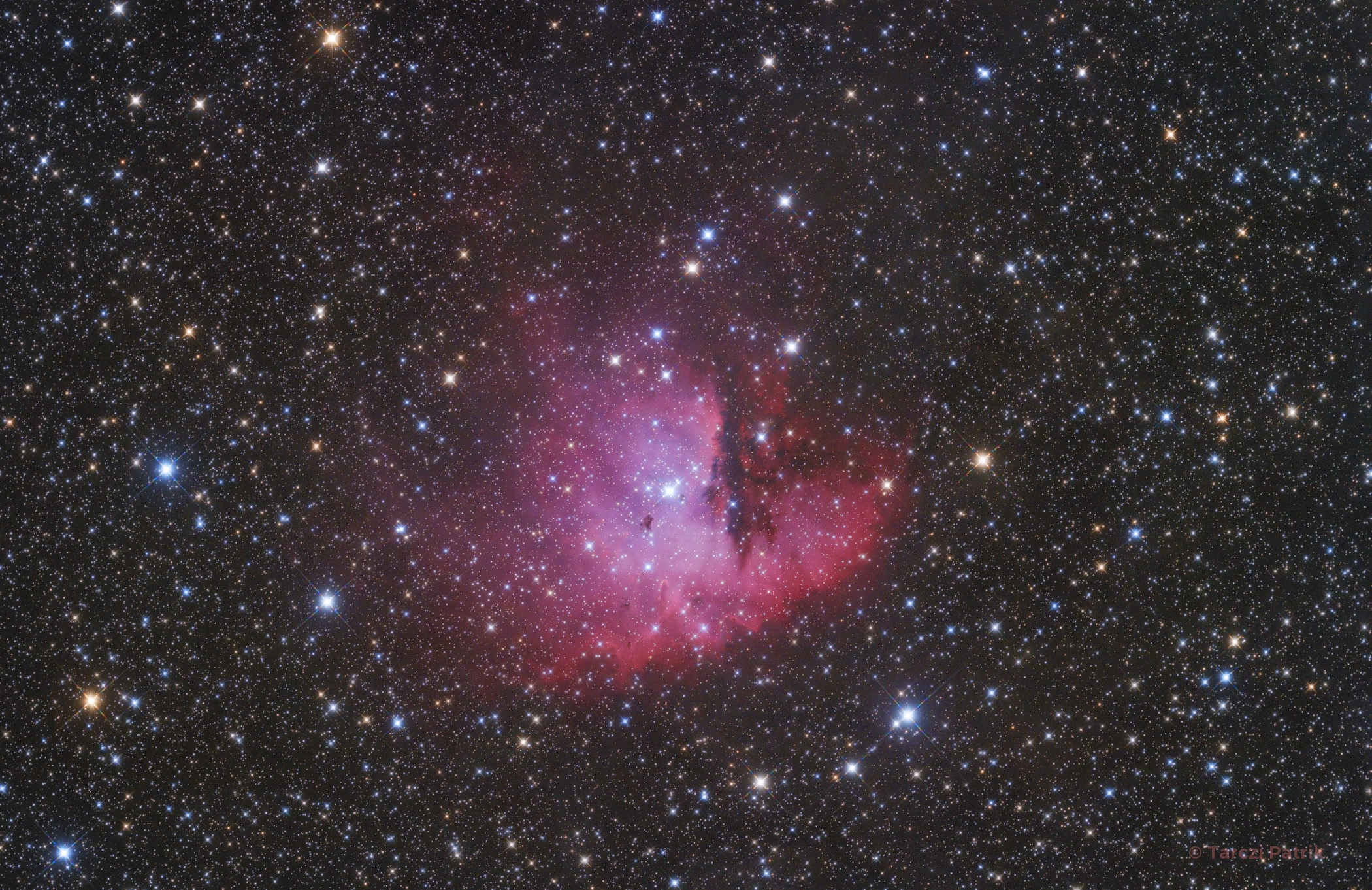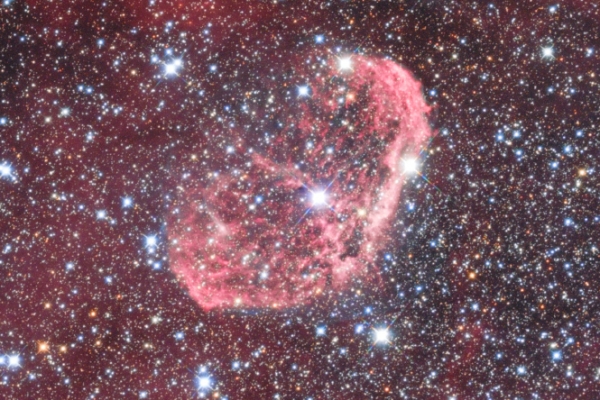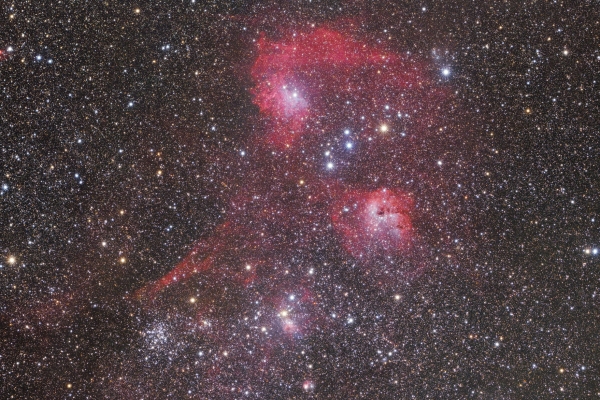The Pacman Nebula
NGC281

Technical data
| Instrument: | 173/700 Newton-astrograph (ZsIO), SkyWatcher comacorrector F/4 |
| Camera: | Canon EOS 60D (modified) |
| Filter: | Baader UV/IR block |
| Mount: | SkyWatcher NEQ6 Pro Synscan (modified) |
| Guiding: | Lacerta M-Gen autoguider |
Image data
| Exposure time: | 75*5 mins, ISO800 |
| Location, date: | Hungary, Izsákfa - 2014. September. 27. |
| Transparency: | 3/10 |
| Seeing: | 7/10 |
| Temperature: | 7 °C |
| Processing: | CCDStack, Registar, Pixinsight LE, Photoshop |
Description
In the '80 years a succesful game is called Pacman. The Pacman Nebula got its name after the protagonist of the game.
Technical data
| Instrument: | 173/700 Newton-astrograph (ZsIO), SkyWatcher comacorrector F/4 |
| Camera: | Canon EOS 60D (modified) |
| Filter: | Baader UV/IR block |
| Mount: | SkyWatcher NEQ6 Pro Synscan (modified) |
| Guiding: | Lacerta M-Gen autoguider |
Image data
| Exposure time: | 75*5 mins, ISO800 |
| Location, date: | Hungary, Izsákfa - 2014. September. 27. |
| Transparency: | 3/10 |
| Seeing: | 7/10 |
| Temperature: | 7 °C |
| Processing: | CCDStack, Registar, Pixinsight LE, Photoshop |
© Patrik Tarczi
Recommended photos

The Crescent Nebula
NGC 6888, also known as the Crescent Nebula, is a cosmic bubble about 25 light-years across, blown by winds from its central, bright, massive star.

In the heart of constallation Auriga
Rich in star clusters and nebulae, the ancient constellation of the Charioteer (Auriga) rides high in northern winter night skies.

The Foal Nebula
Sitting in Cepheus not far from the Iris Nebula a network of Lynds Bright and dark objects can be found. This picture shows part of LBN468 which contains LDN 1150, 1155.


